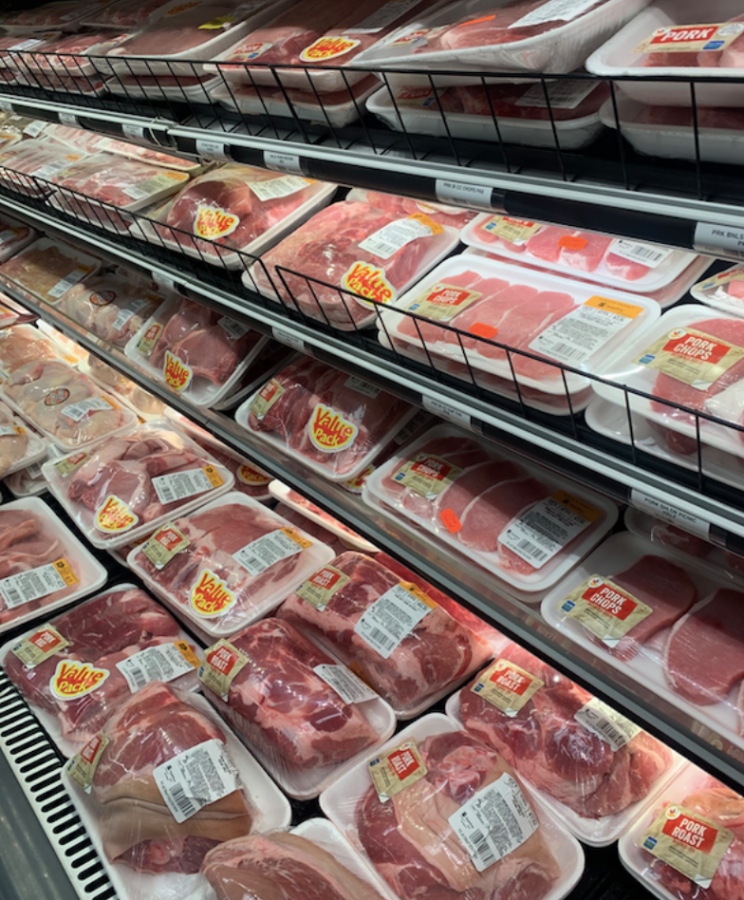Factory farming needs to be taught in schools
It is estimated that 70.4% of cows, 98.3% of pigs and 99.9% chickens raised for meat are raised in factory farms, according to data collected in 2017 by the USDA Census of Agriculture.
Food is an essential component of human life. As people, we spend time every day deciding what to eat and when to eat, but we don’t spend the same amount of energy thinking about where that food came from.
When you think of the term factory farming, you probably have a general idea of what it consists of but lack knowledge of the details. This is an immense problem because if there is any topic we as Americans should be well versed in, it is where our food is coming from and the impacts it has on the environment and our health.
Factory farming is the intensive and industrial production of livestock. This method of farming is designed to maximize production and limit costs. As a result, animals are brutally mistreated, the environment in surrounding areas becomes disgustingly polluted and the quality of the animal products we consume is poor. This is an issue that absolutely concerns students. As individuals, it is essential that we recognize the possible consequences of our actions and the influence we hold over our own futures.
In the United States, factory farming is a massive industry that provides a large portion of America’s food every year, but it is taking a toll on the country’s resources and environment. As of 2018, 12.4 million acres of forest are cut down each year to clear room for industrial agriculture, according to the Washington Post. Factory farming has contributed to a myriad of environmental problems, including water waste, increased methane gases, water pollution and deforestation.
Factory farming has contributed to a myriad of environmental problems, including water waste, increased methane gases, water pollution and deforestation.
— Tierney Kugel '22
Additionally, the small and unclean spaces that livestock is forced to live in not only exhibit cruelty towards the animals but cause a rapid spread of disease and illness in the animals. The same animals are then killed and sold as meat. For example, these poor conditions have resulted in many factory farm pigs developing pneumonia upon entering U.S. slaughterhouses, as reported by PETA. In order to prevent and manage the disease, farmers often turn to drugs. According to the New York Times, 80% of all antibiotic sales went to livestock in 2011. Despite a large portion of antibiotics being allocated to livestock each year, students are not taught about the types of drugs and hormones they risk ingesting from meat and animal products.
For this reason and others, meat poses a serious health risk. The World Health Organization has classified processed meats as a group one carcinogen alongside Tobacco smoke. The American Cancer Society lists processed meat as a known human carcinogen, meaning there is convincing evidence that the agent causes cancer. And despite this, schools still encourage students to eat meat and fail to teach them the risks.
Many school nutrition guides, such as the USDA’s MyPlate, still consider dairy and sometimes meat to be an essential component of diet. Schools across the nation also serve processed meats in their cafeterias. Clearly, meat, especially in regards to factory farming, is harmful. And yet, we still aren’t giving the topic adequate attention in the curriculum.
It is vital that we begin teaching young students the reality of factory farming. Not only so they can consider their health, but also so they can make a moral decision for themselves, knowing all of the necessary information. Factory farming and nutrition need to be discussed in science classes and adequately explained due to the importance of what we consume to human health and the environment. If the details of where most food in America comes from is too graphic or disgusting for children to learn about, we shouldn’t be feeding them it.

Breaking News Editor Tierney Kugel ’22 has a strong passion towards her lifestyle choice, and better yet, loves to write about it. As a vegetarian, she...



















































